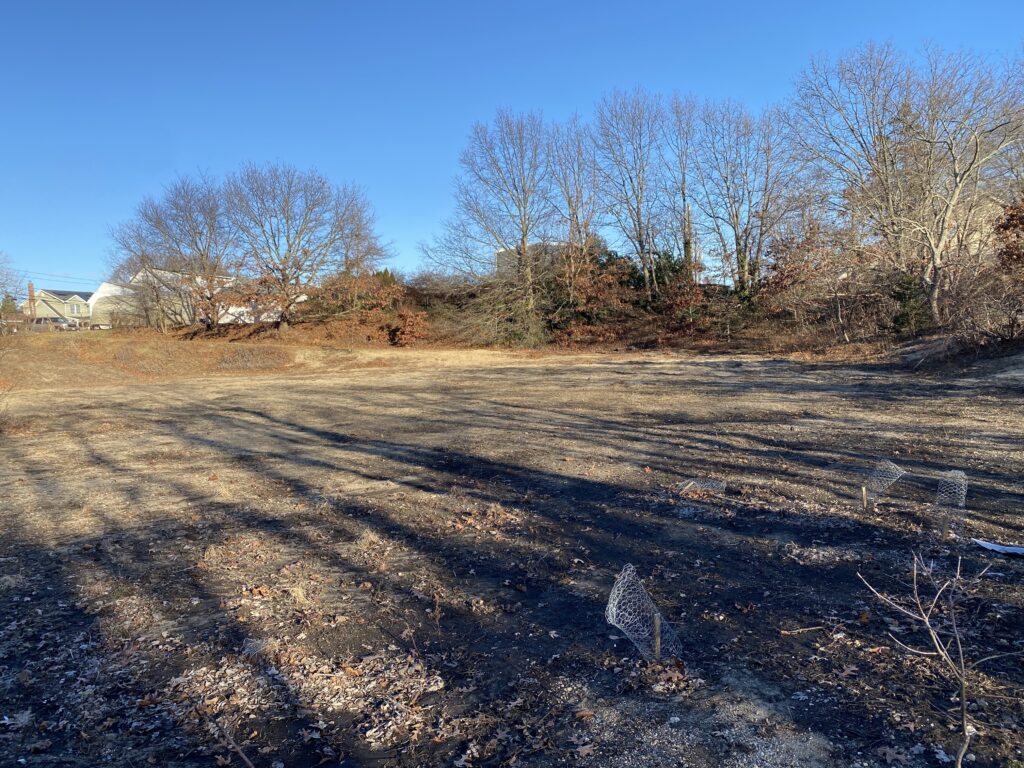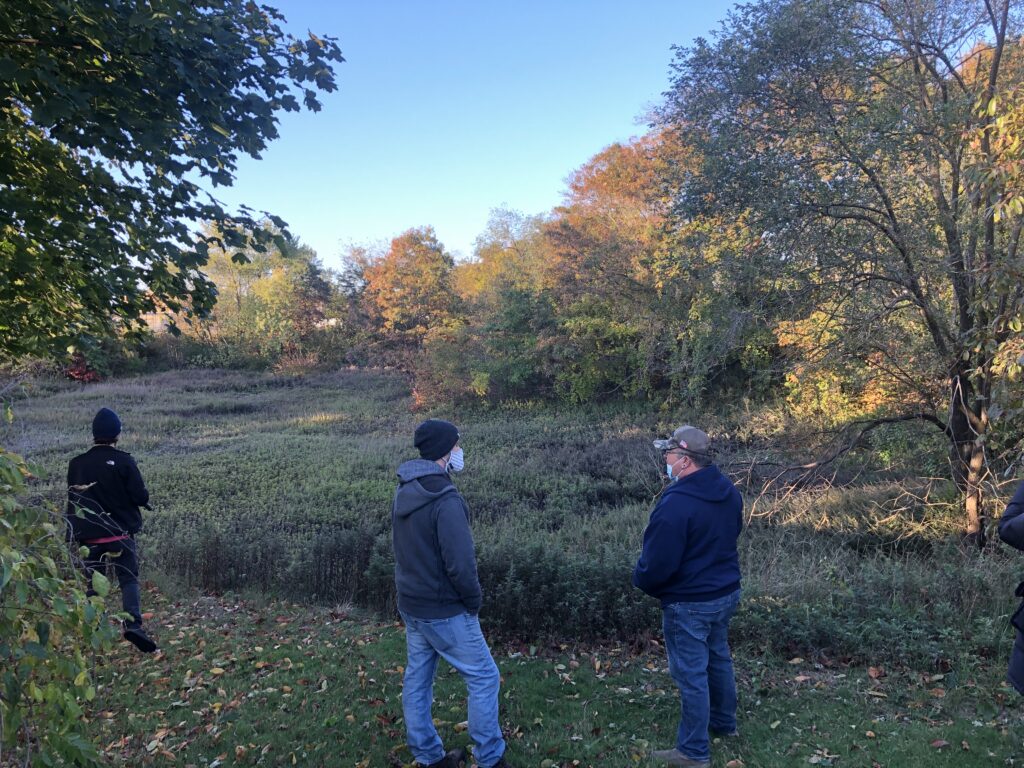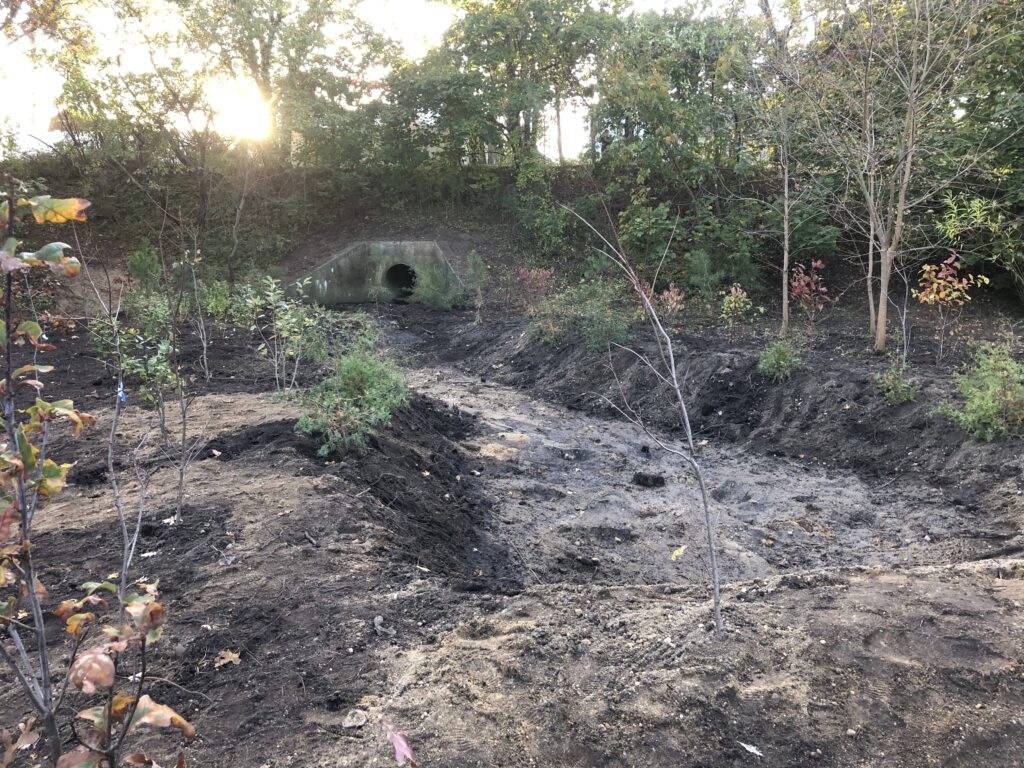This fall, SMPIL Consulting was engaged by The South Shore Audubon Society to create an island of native habitat restoration for local birds from what was a neglected, invasive-choked sump in Massapequa, NY. Thus was born the Michael Sperling Bird Sanctuary. A foundation established with the sudden passing of Mr. Sperling, Board President of the society, on February 5th, 2020, is funding this “sump to sanctuary” conversion. It will be a beautiful legacy. It is also a landmark project that points the way to how we should build habitat in sumps generally. Nassau County alone has over 800. What if they were all gorgeous local parkland / preserves? What would be the return on investment for creating such beauty?

Those are American Chestnut saplings in the foreground. Note that The American Chestnut was an iconic tree. There were once over a billion of them, mostly in the Mid-Atlantic. They were the keystone species of the forest, its acorns feeding a broad variety insects, birds, and mammals. A fungus from a Chinese Chestnut, imported by The New York Botanical Society, in 1904, wiped them out in the course of a couple of decades. There are vestigial stands, and from them researchers have come up with a way to inoculate trees against the fungus by first treating them with “cruddy bark,” where the tree’s immune response then protects it. Frank Piccininni, SMPIL’s Co-Founder, is regional Co-Director of The American Chestnut Foundation. Practically speaking, that means that we scout out where there are still trees, and grow and plant viable saplings. Imagine hundreds of chestnut groves planted in our sumps!
At this point, you may be asking, “What is a sump?” That is an excellent question, since we have neglected and forgotten our sumps, like so much of our public spaces. Sumps are drainage areas, in this case, for collecting storm runoff. The sumps — over 800 of them on Nassau County alone — were created as suburbia was built. The surrounding land where the houses were to be built had to be dry. With Long Island built up so densely and the water table so close to the surface, there is a lot of road runoff. Stormwater is directed through street grates and pipes, and into the sump, where the it collects and seeps into the ground. Road runoff is typically loaded with pollutants — road salts, oil, nitrogen from auto exhaust and from atmospheric deposition, whatever pesticides, fertilizers, and animal waste there would be from yards nearby.
A healthy, well tended sump, would act as a filter to help break down such pollutants and improve surface water quality. Unfortunately, sumps are mostly neglected. Over time, as they become more and more invasive-choked, they lose their ecological function. Without a healthy biome, the sump very often turns into a local repository for trash, wind blown or dumped. Here was how it looked when we first started out:

This giant field of mugwort (Artemisia vulgaris) being removed by SMPIL’s installation arm — Spadefoot Design and Construction — in preparation for a habitat restoration project.

Soon enough, we have our ‘blank canvas’ for our many plantings, thanks to Spadefoot.

Spadefoot trenched around the outfall pipe from the storm drain and planted a variety of willows and oaks so that in time they’d grow into a natural stormwater barrier as well as habitat for local birds. The amount of trash from the road runoff was formidable. We will need to get some netting in along the way.

A “safety valve” was designed for the bioswale: Should the main retaining area overflow, the water would be diverted away. On Dec 1st, the swale and the safety valve were well tested:Stormwater was really ripping yesterday at the Michael Sperling Bird Sanctuary (sump to sanctuary) project. One month post construction and the channels and our ‘safety valve’ is holding up quite well.
We came back on Dec 2nd to see how the water was piling up.
The entire basin of the Michael Sperling Memorial Bird Sanctuary, which is typically dry, flooded two days ago in response to the storm. Incredibly, the place had drained almost completely by the early evening, a couple hours after it flooded.
You can see the draining action concentrated in areas that literally bubbled up in a mesmerizing manner. As the newly established forest matures, it will effectively draw the groundwater up, allowing certain portions of the site to contain a wildlife friendly seasonal wetland forest.
In the end, though the bioswale and the safety valve operated as designed, effectively dissipating the strong concentrated flow emanating from the outfall. This natural infrastructure will grow stronger over time as the native plants mature.Spring will bring much beauty to the sump, and other sump to sanctuary projects await only our readiness to fund such impactful projects.
Below please find the plant list for this project. They were carefully curated to blend in with whatever native habitat was still onsite. The goal for SMPIL is to try and recreate what was there before we were.
Interested in building native habitat in your community? SMPIL specializes in finding what plantings you need. Is it a pollinator garden? Do you want to attract song birds? Do you have a stormwater management issue where a bioswale bordered by native plantings absorbs the water.
Red Maple and Black Willow, recreated “swamp forests” or “upland forests” restore ancient habitat and improve surface water water quality. In the case of sumps, these native arrangements also improve ground water quality as the restored biome filters the water. Along the way, this helps our local birds and amphibians stave off extinction. We must rebuilt habitat locally and everywhere.
In all this, SMPIL Consulting and The South Shore Audubon Society is following the science, most brilliantly presented by Prof. Douglas Tallamy in his NYT Best Selling Nature’s Best Hope, that we need to rebuild habitat in our yards, and in every available public space.
He is particularly driven by a passion to rebuild habitat for songbirds by first curating the right blends of trees, bushes, shrubs, grasses, flowers. The plant mix will draw certain types of insects. A white oak can support over 500 types of caterpillars, essential food for songbirds and their ravenous nestlings.
What was planted then was a complex ecosystem, a food web that will evolve and mature year by year so that decades from now, it will continue to accrue in beauty and in wildlife.

